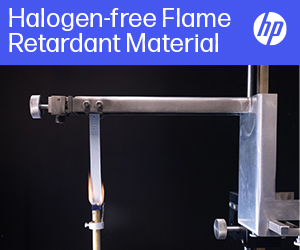FAA Developing Comprehensive Regulatory Plan to Deal With Aerospace Industry’s Adoption of 3D Printing Technology
 One major industry that has made a point of adopting 3D printing technology for many of its projects is aerospace. Multiple US aerospace companies, and the government, have been researching, using, and promoting the use of 3D printing. The always evolving technology has been used to make new materials for aerospace, as well as interior aircraft parts, dividing walls, and business class seats, high-speed turbines and aircraft wings, and smaller components, such as hydraulic components, nozzles, and sensor housings. We’ve even seen an entire 3D printed plane.
One major industry that has made a point of adopting 3D printing technology for many of its projects is aerospace. Multiple US aerospace companies, and the government, have been researching, using, and promoting the use of 3D printing. The always evolving technology has been used to make new materials for aerospace, as well as interior aircraft parts, dividing walls, and business class seats, high-speed turbines and aircraft wings, and smaller components, such as hydraulic components, nozzles, and sensor housings. We’ve even seen an entire 3D printed plane.
Reducing the weight, and functional complexity, of parts and components in the aerospace and defense industry can really ramp up performance; it also brings down the overall cost and energy. However, 3D printed aircraft parts in the US can’t fly very far without the ever-important approval of the Federal Aviation Administration (FAA). The government agency even had to give its stamp of approval for the first drone package delivery back in 2015.
As the field of aerospace continues to research and use 3D printing technology, the FAA needs to work out some overarching guidance for the coming influx of 3D printed aerospace parts. With this in mind, the agency is working on a comprehensive plan on how to deal with the rate at which the industry is adopting additive manufacturing.

Brian O’Connor, VP of Production Operations for Lockheed Martin Space Systems, explaining how the company wants to use new manufacturing techniques, including 3D printing and robotics, to halve the time needed to build a satellite. [Image: SpaceNews]
“Three to four years ago, none of my peers believed we would see additive manufacturing of safety-critical parts. We don’t have them yet, but based on the leading indicators I see it’s coming and it’s coming fairly fast,” said Gorelik.
An FAA team submitted a draft of the Additive Manufacturing Strategic Roadmap last month to agency managers so it could be reviewed. The plan notes that further research and development, along with workforce education and training, is needed, and recommends several steps for the FAA to take over the next seven to eight years. These steps will be used to address the technology from a necessary regulatory standpoint – this includes policies for manufacturing, maintenance, and certification.
Gorelik said that the wide variety of 3D printing materials and processes also presents multiple regulatory challenges. The FAA worked on a similar plan while setting up guidance for composites materials, but setting up guidance for additive manufacturing technology is even more difficult because there are multiple companies using multiple processes and materials, all of which are evolving almost constantly; however, this isn’t necessarily a bad thing.
Gorelik explained, “One could try to group them by source of raw material, for example powder versus wire, and by the source of energy used to melt the material, laser versus electron beam versus plasma arc. This variety of processes is great from the technology and business standpoint because it gives industry a great deal of flexibility.”
In the interest of working together for the greater good, the agency shared its draft roadmap with NASA, the US Army, the Aerospace Industries Association’s Additive Manufacturing Working Group, and the US Air Force.
According to Gorelik, the FAA is working with additional industry groups and government agencies on the plan because “we realize we may not currently have enough internal knowledge and expertise.”
“This is a huge technical problem scope. It would be impractical for any single entity to try to address it single handedly,” Gorelik said. “In my mind, collaboration is the key to ensure the safe introduction of this exciting new technology in commercial as well as military aerospace.”
Discuss this and other 3D printing topics at 3DPrintBoard.com or share your thoughts in the Facebook comments below.
[Source: Space News]
Subscribe to Our Email Newsletter
Stay up-to-date on all the latest news from the 3D printing industry and receive information and offers from third party vendors.
You May Also Like
3D Printing News Briefs, December 28, 2024: Awards, Fast-Curing Silicone Ink, & More
We’re starting off with awards in today’s 3D Printing News Briefs, and then moving on to some interesting AM materials news. Read on for all the details! SME Recognizes Manufacturing...
The Future of Manufacturing Is on Display at Prof. Ping Guo’s Northwestern Lab
Northwestern University’s Ping Guo is at the forefront of advanced manufacturing research, exploring innovative technologies that are shaping the future of additive manufacturing (AM) and beyond. From intelligent metrology and...
3D Printing News Briefs, November 16, 2024: Feasibility Study, Mobile 3D Printer, & More
We’re starting off today’s 3D Printing News Briefs with a little business, including a new 3D printer launch, a feasibility study, an automotive partnership, and more. Then we move on...
3D Printing Webinar and Event Roundup: November 10, 2024
We’ve got another busy week ahead of webinars and events around the world! There are multiple open houses and conferences, advanced AM training, a 3D printer launch event, our own...


































